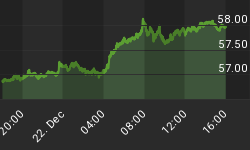Our working assumption is that legislation authorizing an increase on the ceiling on federal debt will be enacted in time for the U.S. Treasury to make all of its previously-authorized expenditures. If, however, this legislation is not passed, then the U.S. federal budget will move into balance. In the 12 months ended June 2011, the Treasury had run a cumulative budget deficit of $1.26 trillion. For the sake of argument, let's assume that the August 2011 budget deficit at an annual rate also is $1.26 trillion. At an annual rate, this is the amount that federal outlays would immediately decline. $1.26 trillion is about 8.4% of what U.S. nominal GDP was running at an annualized pace in the first quarter.
With annualized authorized expenditures exceeding receipts by $1.26 trillion, the Treasury would have to make decisions as to what expenditures it would make and what expenditures it would postpone making. Presumably, the Treasury would give first priority to interest payments on the public debt. We have no idea how the other authorized expenditures would be prioritized. But the arithmetic dictates that federal outlays on net would decline by $1.26 trillion or by 8.4% of nominal GDP.
What would be the immediate economic effect of a sudden balancing of the U.S. federal government budget? The $1.26 trillion decline in federal outlays would represent a negative demand shock to the U.S. economy. Some entities who were expecting payments from the federal government would be disappointed. These disappointed entities might have to cut back on some of their planned spending in order to be able to honor their payment commitments to others. Alternatively, these disappointed entities might have to increase their borrowing in order to honor their payment commitments. To the degree that this increased demand for credit was accommodated by banks and the Fed, then the full effect of negative demand shock on economic activity would be tempered. It is unlikely, however, given banks current inabilities to extend new credit, that much of the increased demand for credit emanating from the sudden and sharp contraction in federal spending would be accommodated through the banking system. The net result would be a sharp contraction in U.S. GDP.
What would be the immediate effect on interest rates of a sudden balancing of the budget? Because the Treasury in all likelihood would pay the interest due on its debt, there would be no immediate default-risk-induced increase in interest rates on Treasury debt. With the sharp contraction in U.S. GDP, there would, however, be an increase in the default risk on private-sector debt. This would lead investors to adjust their portfolios away from private-sector debt toward U.S. Treasury debt. This increased demand for Treasury debt at a time when the supply of Treasury debt was falling would drive down the yields on Treasury debt as the yields on private-sector debt would be rising.
We would not expect the federal budget to remain in balance for long. Seeing the havoc inflicted on the U.S. economy from this, we would expect that legislation raising the public debt ceiling would be passed quickly by Congress and signed into law by the president.















